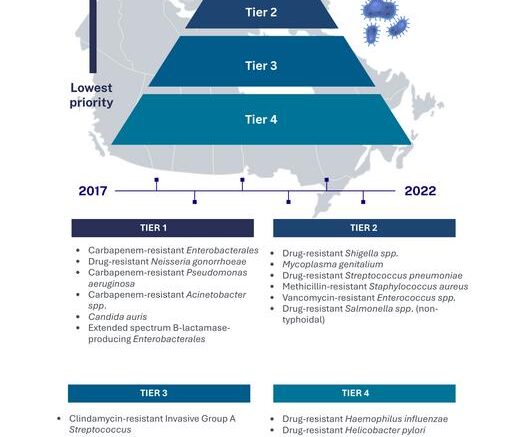Antimicrobial resistance (AMR) is a growing global health threat that undermines the effectiveness of treatments and the sustainability of health systems. In 2015, Canada published its first AMR pathogen prioritization list, which laid the foundation for the Canadian Antimicrobial Resistance Surveillance System (CARSS). Since then, evolving resistance patterns, newly emerging pathogens, and enhanced surveillance capacity have prompted a comprehensive update to identify the most pressing AMR threats in the Canadian context.
The researchers sought to undertake a systematic and reproducible prioritization process, leveraging nationally representative Canadian data, and to identify the most pressing AMR threats. This risk prioritization aims to inform surveillance strategies, which then lends itself to infection prevention and control measures, stewardship initiatives, and research and innovation directions.
A total of 155 pathogens identified as potential threats to Canadians were assessed to determine whether AMR posed a significant concern. Pathogens selected for further evaluation underwent a multi-criteria decision analysis (MCDA) using Canadian data from 2017 to 2022. Nine prioritization criteria, including health equity introduced for the first time, were used to evaluate and rank pathogens based on their risk to public health. Weights were assigned to each criterion, informed by expert consensus, to reflect their relative importance. A sensitivity analysis was conducted to test the robustness of the rankings under different weighting scenarios, ensuring the reliability of the top-ranked AMR pathogens in Canada.
Twenty-nine AMR pathogens were ascertained as significant risks to Canadians and categorized into four tiers based on incidence, treatability, transmission, and health equity. Tier 1 pathogens, including Carbapenem-resistant Enterobacterales, Candida auris, Drug-resistant Neisseria gonorrhoeae, and Drug-resistant Shigella spp., pose the highest risk due to limited treatment options, potentially higher morbidity and mortality, and disproportionate impacts on marginalized populations. The prioritization of N. gonorrhea and Drug-resistant Shigella spp. along with the inclusion of Mycoplasma genitalium in Tier 2 highlight growing concerns in sexually transmitted infections (STIs). These findings underscore the need for continued enhanced surveillance, targeted interventions, and a health equity lens in AMR prioritization.
The researchers say this updated prioritization provides a robust, equity-informed framework to guide AMR surveillance and responses in Canada. It identifies high-impact pathogens and surveillance areas, offering a strategic tool to support public health action and research.
Source: PLOS

